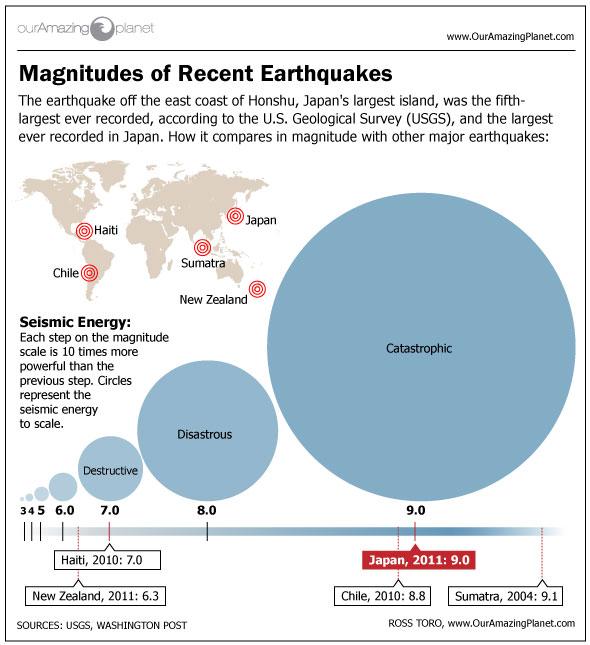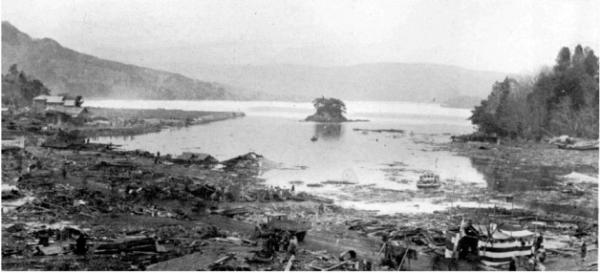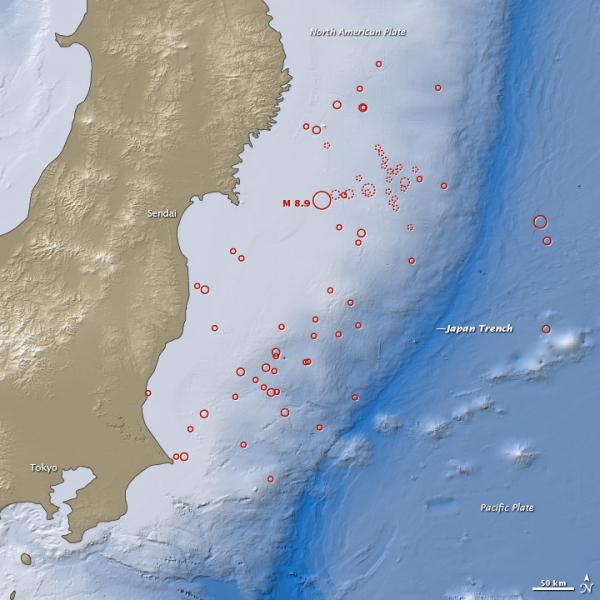
Japan's Biggest Earthquakes

Japan has a notorious earthquake history. About 1,500 earthquakes strike the island nation every year. Minor tremors occur on a nearly daily basis. Deadly quakes are a tragic part of the nation's past.
Japan has such a large potential for earthquakes and disaster because the nation sits atop four huge slabs of the Earth's crust, called tectonic plates. These plates mash and grind together and trigger deadly earthquakes, like the 9.0-magnitude quake that struck on March 11. [Photos: Japan Earthquake and Tsunami in Pictures]
See where that quake falls on the list of the Japan's biggest earthquakes (by their magnitude on the moment magnitude scale):
10 - Great Kanto earthquake, 1923
Japan's worst earthquake of all time wasn't nearly its biggest.
In 1923, a magnitude 7.9 earthquake struck the Kanto plain on the island of Honshu on the morning of Sept. 1. The shaking lasted up to 10 minutes in some places. The quake devastated Tokyo, then home to about 2 million people, and caused widespread damage throughout the Kanto region.
The quake killed 142,800, making it one of the deadliest of all time.
Get the world’s most fascinating discoveries delivered straight to your inbox.
9 - Genroku earthquake, 1703
Japan has had two earthquakes with staggering death tolls of more than 100,000 people. The Genroku earthquake of 1703 was only a magnitude 8.0, but along with its tsunami it killed more than 108,000 people.
Genroku refers to the Japanese era spanning 1688 to 1704. The quake actually struck in Sagami Bay, about 25 miles (40 kilometers) southwest of Tokyo. It ruptured in the middle of a tectonic plate, unlike Japan's most recent quake, which struck where two plates ram together.
8 - Nankaido earthquake, 1946
On the heels of World War II, a magnitude 8.1 earthquake struck Nankaido, Japan, on Dec. 20, 1946. The earthquake was felt from Northern Honshu Japan's largest island and home to about 100 million people to the southernmost island of Kyushu. The quake killed 1,362 people.
This quake ruptured in the Nankai Trough, a subduction zone where one tectonic plate slides below another. Earthquakes have been rupturing here every 100 to 200 years since the 7th century.
7- Aomori earthquake, 1968
This magnitude 8.2 earthquake struck off the east coast of Honshu, near Misawa, Japan, and was followed by a large tsunami, killing 52.
{youtube sZfFK2Jc67k}
6 - Kuril Islands earthquake, 2006
Not all large earthquakes are deadly location matters. In 2006, a magnitude 8.4 quake caused a tsunami to hit Japan's northern coast. But no one was killed on the sparsely populated islands, which are home to about 19,000 people.
The quake ruptured about 19 miles (30 km) deep, triggering a tsunami that injured one person in Waikiki, Hawaii. The tsunami also damaged docks in Crescent City, Calif., which was hit hard by last month's tsunami.
5 - Sanriku earthquake, 1933
In 1933, an 8.4 magnitude earthquake triggered a tsunami, causing widespread damage to towns on the Sanriku coast of the Tohoku region of Honshu, killing more than 3,000.
The quake was about 180 miles (290 km) offshore, but the tsunami was strong enough to wash away about 3,000 houses. Waves up to 94 feet (28.7 m) were reported at Honshu's Ryori Bay. Nearly 10-foot (3-m) waves were reported in Hawaii.
4 - Ansei-Nankai earthquake, 1854
Japan has been hit by several other 8.4 magnitude earthquakes. The Ansei-Nankai earthquake killed 10,000 people on the island of Kyushu, making it the deadliest of its size. At the time, the quake was blamed on a giant catfish, called Namazu, thrashing in the waters, according to a 2006 article in the Journal of Social History.
Ansei is the name for the Japanese era spanning from 1854 to 1860. Nankai is the name of the trough where the earthquake ruptured, south of Honshu.
This quake hit just one day after similarly sized Ansei-Tokai earthquake, which killed 2,000 people. One year later, the Ansei Edo quake, a 6.9 magnitude, would kill 6,600 people.
3 - Meiji-Sanriku earthquake, 1896
This magnitude 8.5 earthquake killed more than 27,000 people in Sanriku, nearly in the same location as the 1933 earthquake. The earthquake itself was too far off-shore to cause much damage, but it triggered a massive tsunami. The tsunami traveled across the Pacific Ocean to Hawaii and California. The quake was followed by 76 aftershocks of magnitude 5.0 or greater.
2 - Hoei earthquake, 1707
The early 1700s were a busy time seismically. Just a few years after the Genroku earthquake, a magnitude 8.6 quake killed 5,000 people in the Nankaido and Tokai regions, on the islands of Honshu and Shikoku.
The earthquake ruptured all segments of the Nankai fault, the only earthquake known to have done so. There is also reason to believe it triggered an eruption of Mount Fuji nearly 50 days later.
1 - Tohoku earthquake, 2011
On March 11, a magnitude 9.0 quake triggered a tsunami that killed an estimated 29,000 thousand people and damaged some nuclear reactors. This earthquake is the largest ever recorded in Japan.
Aftershocks continue to rock the island of Honshu. The aftershocks include more than 50 of magnitude 6.0 or greater, and three above magnitude 7.0. [When Will the Aftershocks in Japan End?]





